 Inventory
Inventory
Our clients have expertise in their own fields, and know their own products best, but they are not specialists in the development of cast or forged metal products. We therefore start our projects by jointly setting out the possibilities. Together, we carefully examine the products from your existing production process which are eligible for improvement.
Next, we hold a workshop in which we look for the right products with your buyers and engineers. Selection is done on the basis of product history, item quantities, practical challenges, item price, materials and other wishes or requirements. New products, if available, are also discussed in this workshop. These sessions frequently give rise to interesting business cases which lead to a continuation of the project.
Result
The selection is made on the basis of a ‘funnel’ document, which filters and prioritises the identified components by value according to a number of characteristics.
 Analysis
Analysis
Each project begins with collecting all the available information. In a workshop, we come together with all the relevant parties to examine the existing production methods, the assembly and the materials. We also create a summary of the client’s wishes and requirements. We carry out research into failure behaviour and draw up the load cases that the product must satisfy. In this process, we challenge our client to join with us in finding out where the design’s limits lie, what the good and bad points of the existing design are, and whether the product has a genuine reason for existence.
Our aim is to avoid assumptions and thus establish the widest possible scope for design. We maintain a continuous dialogue with the client, because the client has the knowledge and specialisation at product level. Our engineers are trained to establish the correct motivations for the wishes and requirements.
Result
We present all our findings on site and document them in a report which serves as the basis for the subsequent phases.
 Conceptualisation
Conceptualisation
Our designers interpret the client’s wishes and requirements, and generate a variety of innovative ideas and solution options at the edge of the defined design parameters. The purpose of the conceptualisation phase is to stir up the proverbial dust. This phase is oriented towards innovation, expansion and research, in order to combine designs which did not previously exist and to arrive at an optimal result.
Result
In a culminating meeting, we present a number of concepts which are based on various design directions. These concepts are evaluated according to their overall strength and furnished with an anticipated price ticket. The client selects the concept - or elements of it - which our engineers will subsequently work out in detail.
 Topology optimisation
Topology optimisation
In complex situations, there is the option to use topology optimisation software. Based on the interplay of forces within the design parameters, the software puts material in the places where it is required in order to keep stresses below a defined level. This method ensures an ideal distribution of material and optimal use of resources. The calculated geometry is used as inspiration for a new, producible model.
Result
We develop digital models and present these to the client. These include the topology-optimised model, the analysis of it, and the producible model worked out in detail.
 Engineering
Engineering
In this phase we further develop, detail and validate the concept. The focus is on creating an ideally producible model with the desired lifespan. To keep the costs of serial production and the environmental impact as low as possible, the number of processing steps and follow-up treatments is kept to a minimum. To safeguard this, we engage in an extensive dialogue with suppliers and partners. The functional validation is done on the basis of the client’s wishes and requirements. The component’s strength is determined using Finite Element Analysis/Method (FEA/FEM).
Result
Optimally validated and producible models and technical drawings, including a report on function and strength.
 Prototyping
Prototyping
In every design process, we test and validate for optimisation. The purpose of testing is to reduce risks and uncertainties. There are various ways of testing for that. For every goal there is a suitable production method; for example, a plastic, 3D-printed component for a geometric fit, a single-piece cast for a lifespan test, a sample of material and coating for a salt spray test, or a visual model to determine the lines of sight. Through our network of partners we can help you with every form of prototyping, and we are happy to contribute our thoughts in the selection of the right prototyping material.
 Serial production
Serial production
Our service package is designed to completely relieve our clients of their concerns. We think proactively with you from the beginning to the end of the production cycle, and we can also supply all the jointly developed products.
Even if we cannot entirely relieve you, you can still approach us for advice. We have a lot of experience with suppliers, and have a wide network, which means we are always able to propose a suitable supplier for your requests and orders without intervention from EDS. Feel free to contact us and ask about the possibilities.
